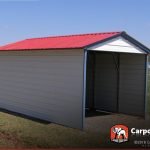If you want to get your green thumb on but lack the space or time to maintain a proper garden, awning gardening is the way to go. It’s an eco-friendly style of gardening that requires little maintenance and produces impressive results. Awning gardens are built on top of your existing deck or patio using awnings as support for the plants. The idea behind it is that if you position your plants in such a way that they get more sunlight than usual and their leaves don’t have any shade from above, they will grow towards it, leaving you with an attractive view from below.
What Are the Benefits of Awning Gardening?
There are several reasons to try awning gardening.
Firstly, it’s a great way to add greenery to your space without having to deal with the hassle of having a full-blown vegetable garden in your backyard.
Secondly, awning gardening is a good option for people who live in smaller apartments and don’t have much outdoor space available. Awning gardens are also great for people who don’t have much gardening experience. Unlike traditional gardens, you don’t have to worry about pests or over-watering your plants. They are perfect for people who want to grow their own food but don’t have much time to dedicate to regular gardening. Awning gardening is also good for your wallet and your environment. It costs less to set up and maintain than a traditional garden and it helps keep carbon emissions down, which is good for the environment.
Why Should You Try Awning Gardening?
Awning gardening is a great way to grow food and plants in spaces that don’t have much sun. If you live in a place that has a lot of shade, awning gardening is a great option for growing plants that need full sun. It’s also a great option for people who want to grow their own food but don’t have much space to dedicate to growing. Awning gardening is great for beginner gardeners because it doesn’t require much maintenance and it can be done on a smaller scale than regular gardening. It’s also a great way to grow vegetables if you live in an apartment. Awning gardening is also good for the environment because it saves water and reduces carbon emissions. It takes less energy to grow plants in awning gardens than it does to grow them in the ground. It also saves water because you only have to water your plants when they need it.
How to Set Up an Awning Garden?
Awning gardens are built on top of your existing deck or patio using awnings as support for the plants. They can be built in sections or as a single long garden. Before you build your garden, you should decide if you want to grow vegetables or flowers or both. Some plants can be grown in both types of gardens, but others are better suited for one or the other. Once you decide what you want to grow, it’s time to start building your garden. Awning gardens are built using a few different materials: – trellis – pots – netting – boards – gardening fabric
8 Best Plants for an Awning Garden
There are a lot of plants that can be grown in awning gardens, but there are a few that are particularly good for beginners. Here are a few plants that are great for awning gardens: – Basil – Beans – Cucumbers – Peppers – Tomatoes – Herbs – Flowers If you have a large awning garden, you can even grow trees and vines. Climbing vines act as a natural trellis and can help support other plants. Some examples of good vines include morning glory, clematis, and sweet potato vine. Keep in mind that not all plants grow well in awning gardens. Be sure to choose plants that have some shade tolerance so they don’t get burnt by too much sun. If you’re not sure what type of plants are good for your awning garden, consult the plant tags at your local gardening store.
Conclusion
Awning gardening can be a great way to add a bit of extra greenery to your outdoor space without having to deal with the hassle of having a full garden. It’s also a good option for people who live in smaller spaces and don’t have much outdoor space available. Awning gardens are easy to set up and don’t require a lot of maintenance, making them a great option for beginner gardeners or people who don’t have much time to devote to gardening.









